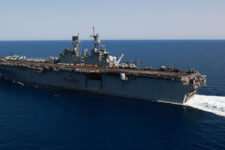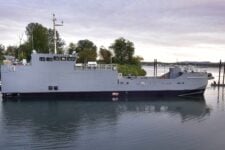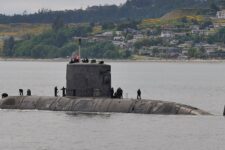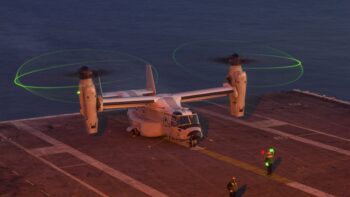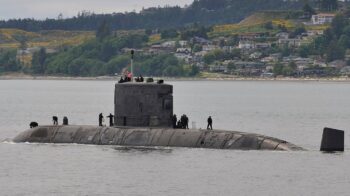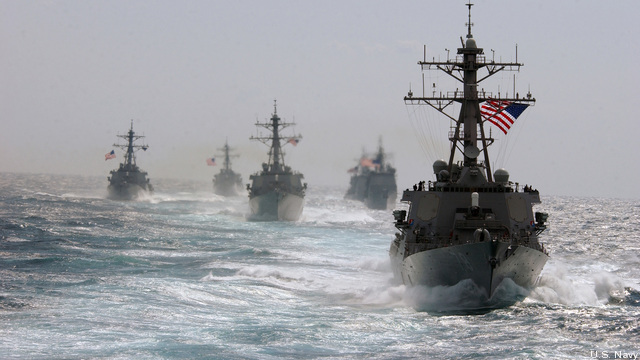 WASHINGTON: It’s not a Nobel Prize, but the Packard Award matters in the big-dollar world of defense procurement. Last week, utterly overshadowed by elections, the Department of Defense awarded the Packard to the Navy’s DDG-51 destroyer, the sleek grey mainstay of the fleet.
WASHINGTON: It’s not a Nobel Prize, but the Packard Award matters in the big-dollar world of defense procurement. Last week, utterly overshadowed by elections, the Department of Defense awarded the Packard to the Navy’s DDG-51 destroyer, the sleek grey mainstay of the fleet.
With 62 Arleigh Burke-class destroyers already in service, four under construction, and at least nine more in the Navy’s latest five-year plan, getting the DDG-51 right — at the right price — is critical to the Navy. The Packard Award recognized an innovative approach that saved an estimated $300 million over the three most recent ships — and which might help the Navy afford the next, far more challenging phase of the destroyer’s evolution.
What was the program’s amazing new approach to lowering prices? In a word: competition. That sounds like Capitalism 101 until you realize how hard it is to get competitive bidding on high-tech, high-cost, high-complexity weapons systems like a Navy ship.
The Navy’s particular problem is that commercial shipbuilding in America is all but dead. The “Big Six” shipyards that remain — soon to be the “Big Five” once the Avondale, La. yard shuts down next year — depend almost entirely on the Navy to stay afloat financially. Further shrinking the pool of potential competitors for contracts, not all of the Big Five can build every kind of Navy ship.
For the flagship of the fleet, the nuclear-powered aircraft carriers, there is in fact just one qualified bidder, Newport News Shipbuilding in Virginia, now owned by Huntington-Ingalls Industries. With most classes of warship, however, there are two: For destroyers, it’s HII’s Ingalls Shipbuilding in Pascagoula, Miss. and General Dynamics’ Bath Iron Works in Maine. In theory, the Navy could have both yards compete, give all its destroyer business to the lowest bidder, and let the other go bust — but then it would have lost half the country’s destroyer-building capacity and even the theoretical possibility of competition.
The annual Navy budget typically buys two Arleigh Burkes — one for each yard. “In a year where you build two ships, if you want to keep two shipbuilders viable and in the business of building destroyers, you have a strong desire to have each guy build a ship,” the DDG-51 program manager, Navy Capt. Mark Vandroff, explained to Breaking Defense. “That would seem to give you very little competitive pressure.”
So instead of conducting a traditional competition, the Navy used “a contracting device called ‘Profit Related to Offer,'” the captain said. “It’s a little complicated.”
Here’s how PRO worked on the Arleigh Burke program:
First, each shipyard submitted, not a normal bid, but the estimated cost to build a destroyer.
Then, each yard got a contract for one destroyer but the better bidder got better terms. The yard that offered the lower cost was given the contract with the higher profit margin, in this case 14 percent. The yard that offered the highest cost still got to build a ship, but with a lower profit margin. So, PRO offers this incentive — the higher the cost (relative to the low bidder), the lower the profit margin.
[The DDG-51 program’s actual formula was (high bidder’s profit) equals (low bidder’s profit) minus 65 percent of (high bid) minus (low bid)].
The contract also uses what the Pentagon calls a “Fixed-Price Incentive” system, where contractors are penalized for cost overruns. For each dollar they go above the contract price, the Navy only pays them 50 cents, and the contractor has to eat the other half-dollar — so there’s a strong disincentive against submitting unrealistically low bids. “You don’t want to low-ball because you’ll overrun and pay 50 percent of that,” said Vandroff.
It works the other way as well. “You don’t want to high-ball, either,” however, Vandroff went on. If you bid unrealistically high and then come in under budget, the Navy only lets you keep 50 cents of every dollar you save, taking the other half as savings to the government. Under the Profit Related to Offer system, it’s more profitable to have bid a realistic cost up front, be the low bidder, and get awarded the higher profit margin.
(Yes, it’s complicated).
The DDG-51 program applied this PRO methodology to three of the four ships now under construction. (The fourth was awarded without competition to Huntington-Ingalls in compensation for the Navy moving all the remaining work on another program, the DDG-1000, to Bath Iron Works). The Pentagon estimates it saved $298 million across all three ships. That’s 5.5 percent off the $5.4 billion originally budgeted cost — or, if you discount all the weapons systems and sensors bought from other contractors, and just compare the $300 million in savings to the $2.4 billion budgeted to pay the shipbuilders themselves, it’s 12.5 percent.
With all three ships still under construction, one congressional source said, “there’s still a lot of time for things to go wrong — but good for them.”
So what’s next for DDG-51? If Congress ever gets its act together to pass the annual defense authorization bill for 2013, it is expected to approve multi-year procurement authority for multiple destroyers over the next five years: at least nine DDG-51s, and possibly a tenth if the shipyards offer a good enough deal.
“When you have a PRO and a multi-year,” said Vandroff, “they reinforce each other in a virtuous circle.” While the Navy can’t award a contract until Congress passes the authorizing law, it has already asked for, and received, Price Related to Offer bids from both shipyards for several scenarios: a nine-ship buy, four from one yard and five from the other. A 10-ship buy, evenly divided five and five; and a 10-ship buy, unevenly split, with six ships going to the low bidder and four to the high bid.
What’s especially complicated is that the Navy plans to redesign the destroyer part-way through this five-year contract, evolving the DDG-51 into a ballistic missile defense ship with a revolutionary new radar that requires extensive new power and cooling systems. Critics charge the changes are so radical that this is really a new class of ship, just crammed into an existing hull, but the Navy simply calls the new destroyer DDG-51, Flight III. (The ships now being built are the version called “Flight IIA,” which was preceded, naturally, by Flights I and II).
The Navy’s official estimate for the first Flight III destroyer — and the first ship of a new design is always more expensive than those that follow — is $2.6 billion. But an internal Naval Sea Systems Command (NAVSEA) study leaked a year ago suggested the ship might cost $3.6 billion.
Some people have already made up their minds about the feasibility of Flight III, Vandroff told Breaking Defense, but “they’re a little too soon.” The Navy doesn’t plan to buy the first Flight III destroyer until fiscal year 2016, he noted, and “we’re not going to even do advanced procurement for that ship until FY 15.” So there’s still time to refine the design, mature the technology and bring down costs, he said: “The Navy’s gonna make its decision when it has to make its decision.”
Edited at 5:30 pm
V-22 Osprey operating with ‘limited envelope,’ required to stay near airfields
Despite all three US V-22 variants flying, they remain under safety restrictions, according to service acquisition officials.


